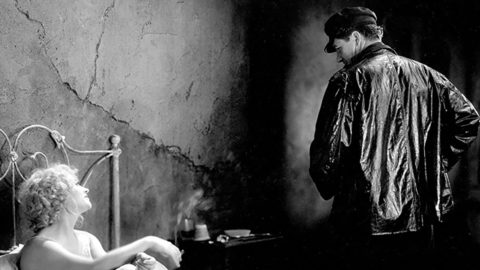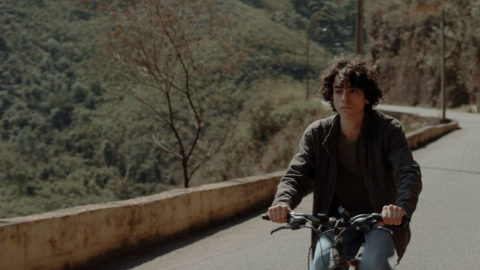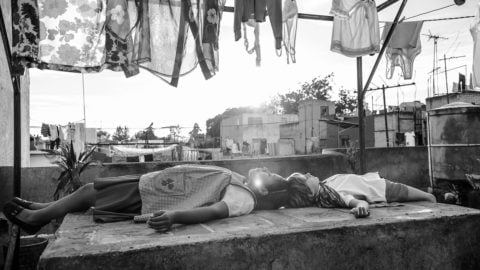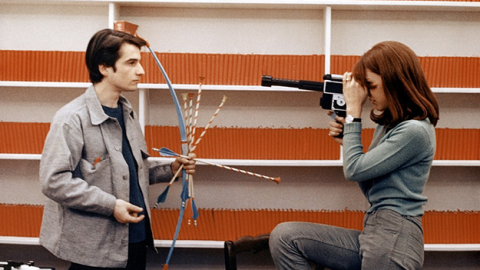Capturing Chaos: Capernaum and the Children of Neorealism
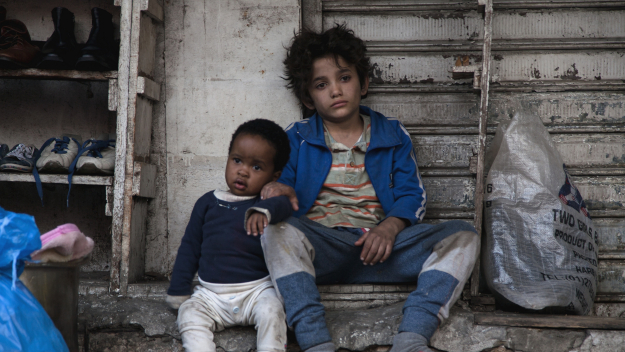
In 1947, James Agee began his review of Vittorio de Sica’s Shoeshine by roughing out a definition of humanism, then noting parenthetically, “I can most briefly suggest what I mean by a genuine recognition of human beings as such by recommending that you see the Italian movie Shoeshine and that you compare it in this respect with almost any other movie you care to name.” In his extended, rapturous consideration (“one of the few fully alive, fully rational films ever made”), Agee eventually gets around to a brief critical analysis of the film qua film, but his response is unabashedly emotional, moral, and philosophical—he illustrates his own first principles by reacting as a human being, not just a movie critic.
I found myself thinking about this piece, in which Agee grapples with what a “work of protest, a work of social art” needs to be, after seeing Nadine Labaki’s Capernaum. This film is such a passionate indictment of the neglect and abuse of children living in poverty that I left feeling that the proper response was not a review but a donation to Save the Children—preferably a large one. However, this is perhaps unfair to the art with which Labaki and her collaborators have managed to package the unbearable, creating an experience that is upsetting but also absorbing—it is hard to watch and hard to look away. Capernaum is an archaic word that, as the credits inform us, signifies chaos. The squalid disorder and casual violence of poverty are amply present, but contained by the film’s rather conventional structure, which proceeds in flashbacks framed by courtroom scenes that serve largely to lay out information and hammer home a message. But if the plot mechanics are somewhat flimsy it hardly matters, because such a powerful gravitational center is provided by the protagonist, Zain, a boy of around 12 played with electrifying toughness, hurt, and grace by Syrian refugee Zain al-Rafeea.
Already in jail for stabbing someone, Zain decides to sue his parents for bringing him into the world. He harbors a scorching moral fury: he knows, somehow, exactly how wrong that world is. In court, he recalls a hellish upbringing in the slums of Beirut, with an unspecified number of grubby siblings who are sent out to hustle juice in the streets rather than going to school, and whose parents, entrenched in their own marginality, have not bothered to legally register the children’s existence. Running away from home, Zain is eventually taken in by a kind, undocumented Ethiopian immigrant who lives in a shanty-town, and he tries to look after her baby, Yonas, when she vanishes into prison. With his foul mouth and street-smart ways, Zain is no saint or innocent, but the most striking thing about al-Rafeea’s performance is not his defiance or charisma, it is the monumental sadness in his face, which makes him seem eerily older than his years. He tries to protect others weaker than himself—first his beautiful younger sister Sahar, whom he coaches to hide her first period so that she won’t be married off to a much-older local shopkeeper; then Yonas (Boluwatife Treasure Bankole—who, if the Academy Awards included such a category, would be a shoo-in for Best Performance by a Baby). Zain’s chemistry with the joyful, curious Yonas is heart-melting, and there is nothing in the film more agonizing than the scene where, at the end of his rope, he surrenders the toddler to a smooth-talking human trafficker.
Such emotional torture is as much a defining feature of neorealism as location shooting or the use of non-professional actors. I cannot even think about Umberto D. and his little dog, or the son comforting his father at the end of Bicycle Thieves without getting all choked up, feeling slightly resentful at having my heartstrings so mercilessly tugged, and then feeling ashamed of that resentment because I know that worse things go on under my nose every day and I find them all too easy to ignore while blubbering over 70-year-old Italian movies. It is no coincidence that many neorealist classics feature children, whose naked emotions and unself-conscious behavior serve the project of stripping the gloss and artifice from movies (though children can also, when poorly directed, be the most excruciatingly self-conscious and artificial of performers). Capernaum is filled with allusions to this lineage. When the homeless Zain starts hanging around an amusement park, there are echoes of Little Fugitive (1953), and a final, lingering freeze-frame of his face inevitably conjures The 400 Blows (1959). All the scenes of children working, and living in jail cells, recall Shoeshine, the story of two street boys whose friendship is destroyed, and their characters warped, by manipulation in a juvenile prison.
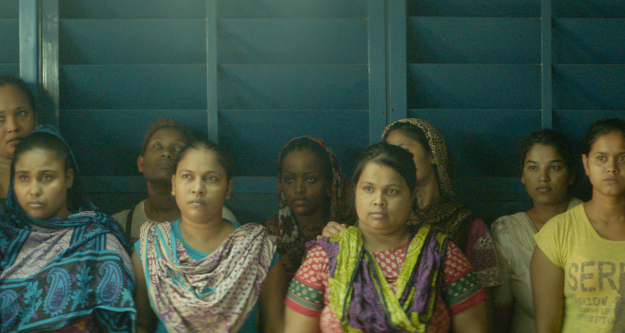
Labaki has said that the children in the film were never given lines to memorize, and that action unfolded organically in very long takes (al-Rafeea was illiterate when filming began, while Bankole—a girl cast as a boy—was pre-verbal). “We had to be at their service. We had to be observant,” she told The New York Times. “And really, I never asked them to act. I just wanted them to be who they were, and it was up to me to know how to capture that nature and not alter it.” Coincidentally, elsewhere in the same edition of the Sunday Times, director Alfonso Cuarón explained that in making Roma, none of the mostly non-professional cast, or even the crew, was given the full script; the film was shot in continuity, and actors were given their lines the morning of shooting, or given no lines and merely asked to react naturally. “So when we began filming we had chaos,” he said, “And that was it. Everyone would have to exist inside that chaos, as in life.” Roma, in its very different way, also displays its debt to neorealism, though its lovely, painstaking recreation of a past era—the early 1970s Mexico of the director’s childhood—is fundamentally different from the raw immediacy of that movement.
Neorealism seems to be having a moment (Alice Rohrwacher’s Happy as Lazzaro, another treatment of dire poverty, has prompted comparisons to La Terra Trema and Bitter Rice), though perhaps it has never really gone away. But movies have always struggled with the problem that, as T.S. Eliot wrote, “Humankind cannot bear very much reality.” Precisely because they have the potential to be so overwhelming, films must find ways to present the worst without becoming unwatchable. (Roma strikes an exquisite balance between delicacy and brutality in the scene where Yalitza Aparicio’s character gives birth to a stillborn child.) In Capernaum’s most violent and distressing scenes, as when Zain’s 11-year-old sister is dragged off into a forced marriage, or when he rushes out with a kitchen knife to avenge her death, the camerawork becomes so mobile and jerky that the image blurs, granting us a degree of distance, drawing a veil over horror. Streaks of humor, warmth, and even hope lighten the gloom, but the film is resolute in never allowing squalor to become picturesque. Aside from a fleeting moment when Zain, riding in a Ferris wheel, suddenly glimpses the expanse of the sea, the only beauty on screen lies in faces, where its fragility is palpable.
In his review of Shoeshine, Agee locates “the beginning of true reason,” in “the ability to recognize oneself, and others, primarily as human beings, and to recognize the ultimate absoluteness of responsibility of each human being.” Capernaum, though not flawless as an artwork, fully meets those conditions, joining Hirokazu Kore-eda’s Shoplifters and João Dumans and Affonso Uchoa’s Araby among this year’s deeply humane portraits of poverty, which never lose the individuality of their characters in the exoticism of marginality. This should please the shade of Agee, who ends his outpouring with regret that the neorealist moment is already fading, and hope that its spirit will be “by no means completely lost.”
Imogen Sara Smith is the author of In Lonely Places: Film Noir Beyond the City and Buster Keaton: The Persistence of Comedy, and has written for The Criterion Collection and elsewhere. Phantom Light is her regular column for Film Comment.



